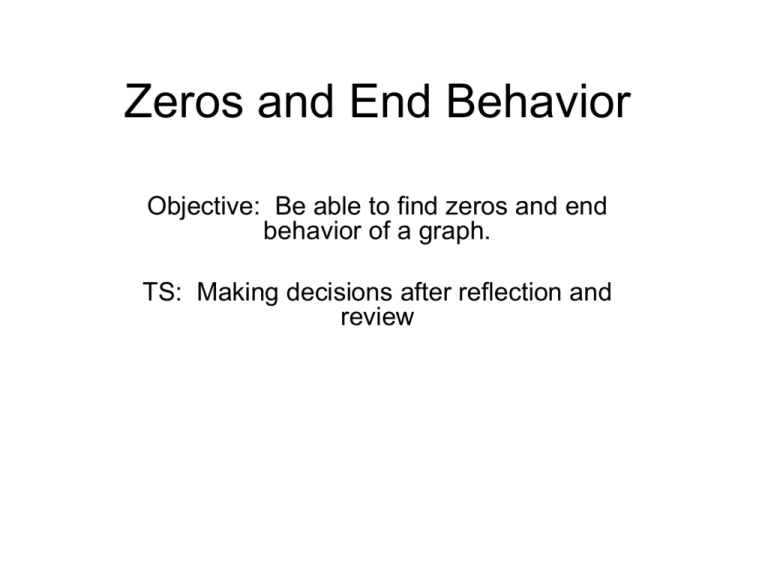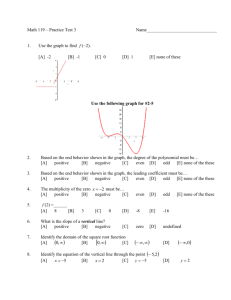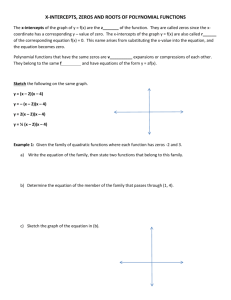Zeros and End Behavior
advertisement

Zeros and End Behavior Objective: Be able to find zeros and end behavior of a graph. TS: Making decisions after reflection and review Exploration: a) Find the end behavior of each of the following equations. Look for a pattern and then describe how you would find the end behavior without actually graphing. b) Find the number of x-intercepts of each of the equation. See if you can find a connection between the number of x-intercepts and the equation itself. a) b) c) d) e) f) g) h) i) j) k) l) m) n) y = x2 + 2x + 1 y =-2x2 + 3x – 1 y = -x2 y = 2x2 – 1 y = 2x3 + 4x – 1 y = -x3 + 2x – 1 y = 4x4 + 1 y = 3x3 – 2 y = 5x5 y = -4x5 + 1 y = 8x8 y = -4x7 + 5x3 – 4x – 1 y = 8x3 – 4x4 – 2x + 3 y = -3x5 + 4x6 – x4 End Behavior Given f ( x) ax n bx n1 ... ex f Right Hand Side Left Hand Side lim f ( x) x lim f ( x) x Find the zeros of each of the following. 1) y = x3 + x2 – x – 1 2) y = x4 – 8x2 + 16 3) y = 2x5 + x4 – 6x3 4) y = -2(x + 2)2(x – 2) 5) y = 3(x – 1)3(x + 2)2(x – 4) Multiplicity When a zero is repeated it is said to have a multiplicity equal to degree of it’s factor. Which zeros from the last examples have a multiplicity, and what are their multiplicites? What happens to the graph when a zero has a multiplicity? .. Graph sketching When you’re asked to sketch a graph… 1) Find the end behavior 2) Find the zeros and their multiplicities 3) Find the y-intercept 4) Sketch away! Sketch 1) y = x3 + x2 – x – 1 Sketch 2) y = x4 – 8x2 + 16 Sketch 3) y = 2x5 + x4 – 6x3 Sketch 4) y = -2(x + 2)2(x – 2) Sketch 5) y = 3(x – 1)3(x + 2)2(x – 4)






